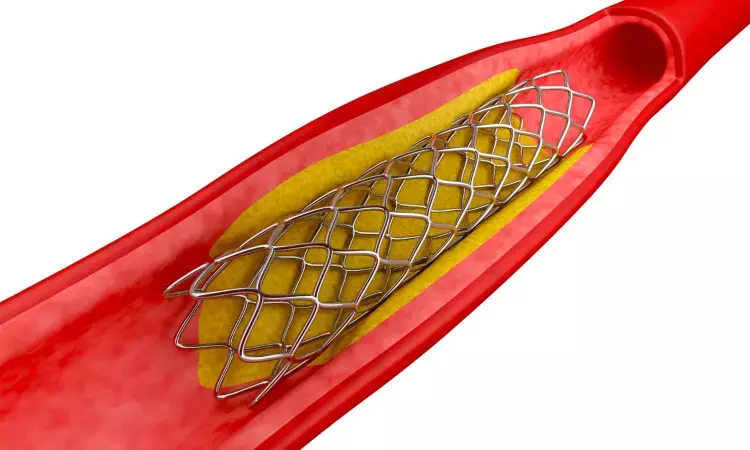- Home
- Medical news & Guidelines
- Anesthesiology
- Cardiology and CTVS
- Critical Care
- Dentistry
- Dermatology
- Diabetes and Endocrinology
- ENT
- Gastroenterology
- Medicine
- Nephrology
- Neurology
- Obstretics-Gynaecology
- Oncology
- Ophthalmology
- Orthopaedics
- Pediatrics-Neonatology
- Psychiatry
- Pulmonology
- Radiology
- Surgery
- Urology
- Laboratory Medicine
- Diet
- Nursing
- Paramedical
- Physiotherapy
- Health news
- Fact Check
- Bone Health Fact Check
- Brain Health Fact Check
- Cancer Related Fact Check
- Child Care Fact Check
- Dental and oral health fact check
- Diabetes and metabolic health fact check
- Diet and Nutrition Fact Check
- Eye and ENT Care Fact Check
- Fitness fact check
- Gut health fact check
- Heart health fact check
- Kidney health fact check
- Medical education fact check
- Men's health fact check
- Respiratory fact check
- Skin and hair care fact check
- Vaccine and Immunization fact check
- Women's health fact check
- AYUSH
- State News
- Andaman and Nicobar Islands
- Andhra Pradesh
- Arunachal Pradesh
- Assam
- Bihar
- Chandigarh
- Chattisgarh
- Dadra and Nagar Haveli
- Daman and Diu
- Delhi
- Goa
- Gujarat
- Haryana
- Himachal Pradesh
- Jammu & Kashmir
- Jharkhand
- Karnataka
- Kerala
- Ladakh
- Lakshadweep
- Madhya Pradesh
- Maharashtra
- Manipur
- Meghalaya
- Mizoram
- Nagaland
- Odisha
- Puducherry
- Punjab
- Rajasthan
- Sikkim
- Tamil Nadu
- Telangana
- Tripura
- Uttar Pradesh
- Uttrakhand
- West Bengal
- Medical Education
- Industry
Paclitaxel-coated balloon and paclitaxel-eluting stent safe option for DES in-stent restenosis in PCI

A recent study published in the European Heart Journal suggests that compared to plain Balloon (PB), paclitaxel-coated balloon (PCB) and paclitaxel-eluting stent (PES) may be equally effective and safe options for treating drug-eluting stents in-stent restenosis (DES-ISR) in percutaneous coronary intervention (PCI).
Drug-eluting stents are widely used in the treatment of coronary artery disease. However, DES-ISR, the re-narrowing of a previously treated artery segment, remains a challenge. The ISAR-DESIRE 3 trial by Daniele Giacoppo and team aimed to define the 10-year comparative efficacy and safety of plain balloon PB, PCB, and PES for PCI of DES-ISR. The study followed 402 patients with DES-ISR who were randomly assigned to PB angioplasty, PCB angioplasty, or PES implantation.
Clinical follow-up did not significantly differ among treatments, but at 10 years, the primary composite endpoint (cardiac death, target vessel myocardial infarction, target lesion thrombosis, or target lesion revascularization) occurred in 72.0% of patients assigned to PB, 55.9% of patients assigned to PCB, and 62.4% of patients assigned to PES.
The major secondary safety endpoint occurred in 34.1% of patients assigned to PB, 34.0% of patients assigned to PCB, and 40.0% of patients assigned to PES, with no significant differences observed among the treatments.
Target lesion revascularization occurred in 58.0% of patients assigned to PB, 43.9% of patients assigned to PCB, and 38.6% of patients assigned to PES. The pairwise comparison between PES and PCB resulted in a non-significant difference in target lesion revascularization.
The study found that both PES and PCB significantly reduced target lesion revascularization compared with PB. However, the excess of death and cardiac death associated with PES compared with PCB within 5 years after PCI and the results of the competing risk analysis are challenging to interpret and warrant further analysis.
Source:
Giacoppo, D., Alvarez-Covarrubias, H. A., Koch, T., Cassese, S., Xhepa, E., Kessler, T., Wiebe, J., Joner, M., Hochholzer, W., Laugwitz, K.-L., Schunkert, H., Kastrati, A., & Kufner, S. (2023). Coronary artery restenosis treatment with plain balloon, drug-coated balloon, or drug-eluting stent: 10-year outcomes of the ISAR-DESIRE 3 trial. In European Heart Journal. Oxford University Press (OUP). https://doi.org/10.1093/eurheartj/ehad026
Neuroscience Masters graduate
Jacinthlyn Sylvia, a Neuroscience Master's graduate from Chennai has worked extensively in deciphering the neurobiology of cognition and motor control in aging. She also has spread-out exposure to Neurosurgery from her Bachelor’s. She is currently involved in active Neuro-Oncology research. She is an upcoming neuroscientist with a fiery passion for writing. Her news cover at Medical Dialogues feature recent discoveries and updates from the healthcare and biomedical research fields. She can be reached at editorial@medicaldialogues.in
Dr Kamal Kant Kohli-MBBS, DTCD- a chest specialist with more than 30 years of practice and a flair for writing clinical articles, Dr Kamal Kant Kohli joined Medical Dialogues as a Chief Editor of Medical News. Besides writing articles, as an editor, he proofreads and verifies all the medical content published on Medical Dialogues including those coming from journals, studies,medical conferences,guidelines etc. Email: drkohli@medicaldialogues.in. Contact no. 011-43720751


